North Melbourne to Upfield
When the Coburg to Somerton line was opened on 8th October 1889 it was like all suburban lines constructed under Act 821, a single line with platforms provided on both the main line and No 2 road. These loop platforms would have seen little if any use except maybe at crossing stations and were all removed by 1900. There was a goods siding at Campbellfield around the back of the loop platform that remained until 1941. North Campbellfield also had a short siding to a quarry at the down end western side.
The line was closed to all traffic on 13th July 1903 and remained closed until the section to Fawkner was reopened in 1906 to Fawkner at a new site for the Cemetery traffic.
With housing estates opening during the 1920’s the line was reopened on 5th March 1928 from Fawkner to a deadend provided at Somerton and 26 foot turntables provided for turning the AEC Railmotor at each place. Due to declining traffic the line was closed on 5th May 1956.
The line was originally laid with 75lb rail and this remained until c.1970 hence the 30mph speed limit when reopened for electric trains to Upfield.
Anstey box diagram 1940
Anstey box diagram 1985
Arden St box diagram 1962
Arden St box diagram 1928
Batman box diagram 1935
Batman box diagram 1959
Batman box diagram 1982
Brunswick box diagram 1966
Coburg box diagram 1978
Coburg box diagram 1983
Fawkner box diagram 1982
Flemington Bridge box diagram 1913
Jewell box diagram 1971
Jewell box diagram 1984
Macaulay box diagram 1914
Macaulay box diagram 1948
Moreland box diagram 1944
Royal park box diagram 1965
Royal Park box diagram
1971
MACAULAY

ABOVE & BELOW: Macaulay is the first station past North Melbourne on the Coburg / Upfield line, set in a working class industrial area it is now almost buried under the Citylink freeway. Photo looking towards North Melbourne early 1920's. Interestingly the gas lighting survived electrification at a number of suburban stations. Due to the nature of "directing arms" the bottom arm, shown at proceed, applied for the straight or mainline movement, the top arm took you through the points towards the yard.


ABOVE: All 7 roads at Macaulay stabling sidings are filled with Comeng's Dec. 30 2006
ROYAL PARK

ABOVE:Royal Park has had three signalboxes. The first was at the physical junction with the Fitzroy line. The second signalbox at Royal Park was on the down side of the line, the ramped down platform can just be seen at the extreme right hand edge of the photo. Before Preston trains could run direct to Melbourne via Collingwood all Preston line trains had to come into the city via Royal Park so it would have been a busy junction. With direct running there would have been far fewer trains to signal and the signalbox was moved to its present location on the up end of the up platform. This box lasted from Dec. 23 1890 (15 lever Rocker frame) until Dec. 4 1904.
BELOW: A MMBW plan, the fact that both signalboxes are shown indicate the plan is post 1904.


ABOVE: The junction at Royal Park looking in the up direction, the inner circle are the lines on the left, the Upfield line are the lines on the right. Somewhere in the V would have been the location for the first Royal Park signalbox. March 1965. Photo courtesy Des Jowett.
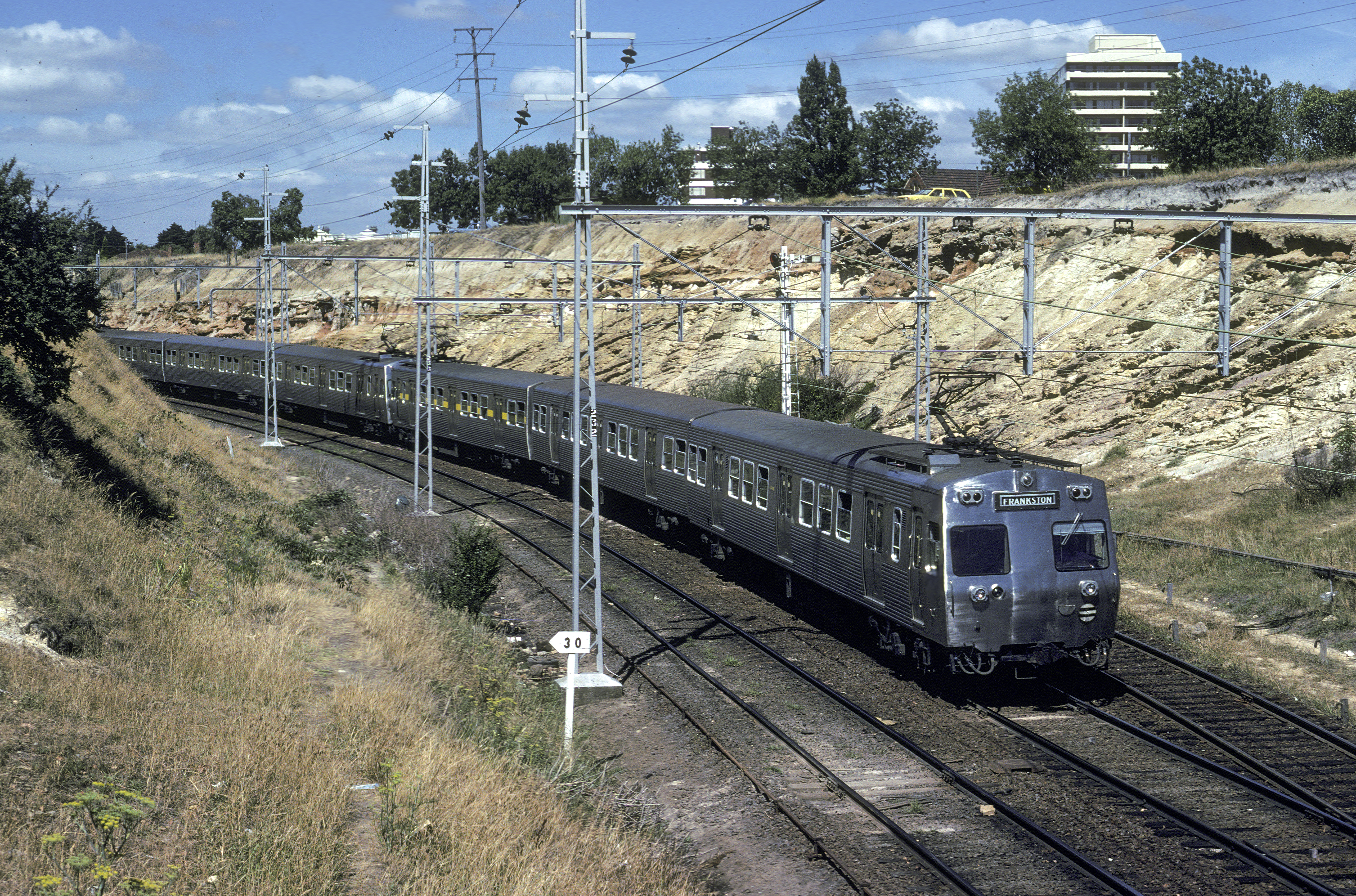
ABOVE: An up 6 car silver from Upfield arrives at Royal Park. The line to the right was the inner circle that used to junction with the Epping line, it also served sidings in Carlton and Fitzroy. Feb. 1981 BELOW: an up Harris on the same curve on the same day.
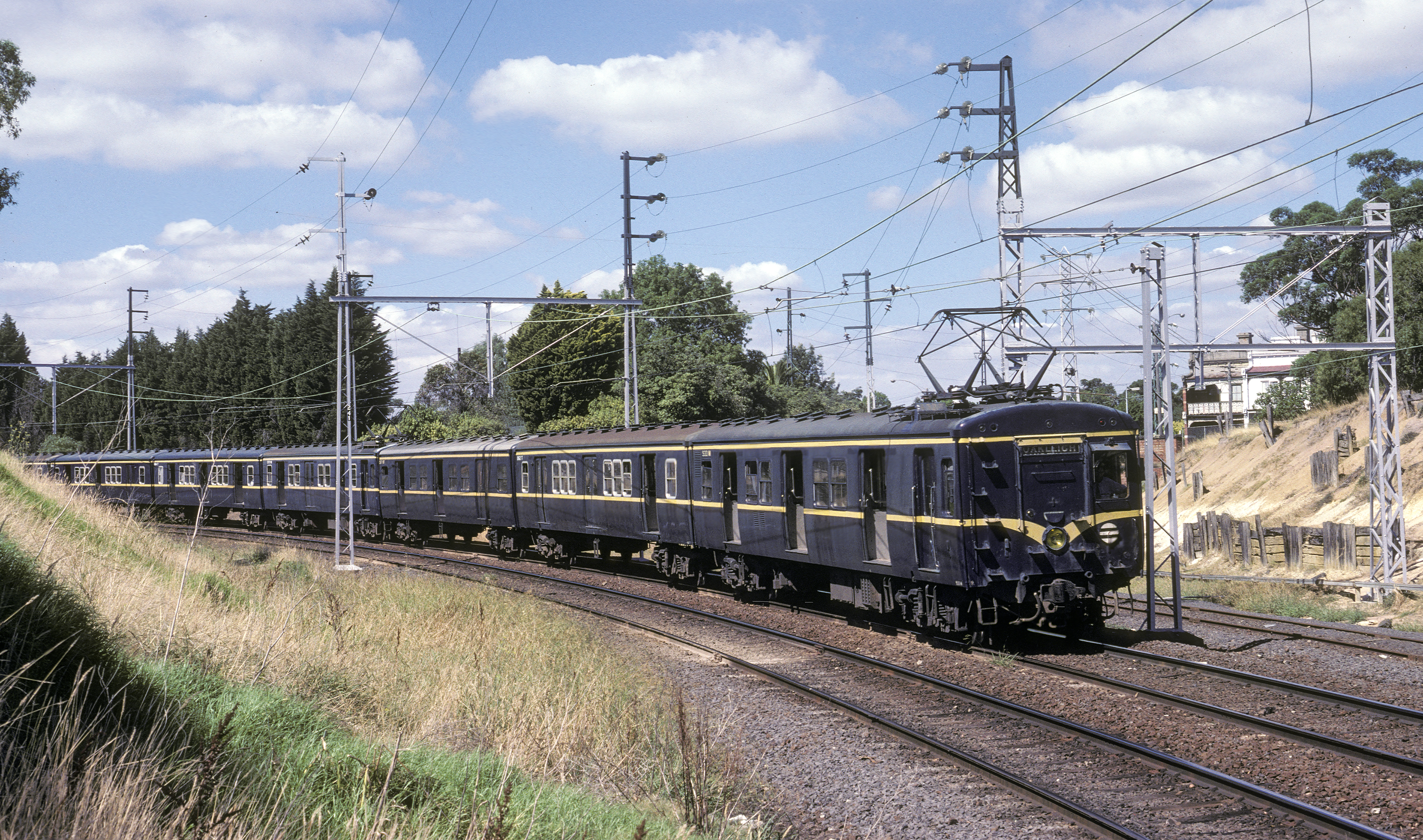

ABOVE: B 75 sits on the inner circle line at Royal park on a rake of empties as it waits a run onto the mainline and back to Melbourne, July 7 1974
Photo courtesy Stuart Lodington.

ABOVE: An up Fitzroy goods waits at Royal Park to enter the mainline. 1978
Photo courtesy Peter J Vincent

ABOVE: Freshly painted parcels coach CM 4 arrives Royal Park on an up Upfield to Flinders Street service. Feb. 1981
Jewell
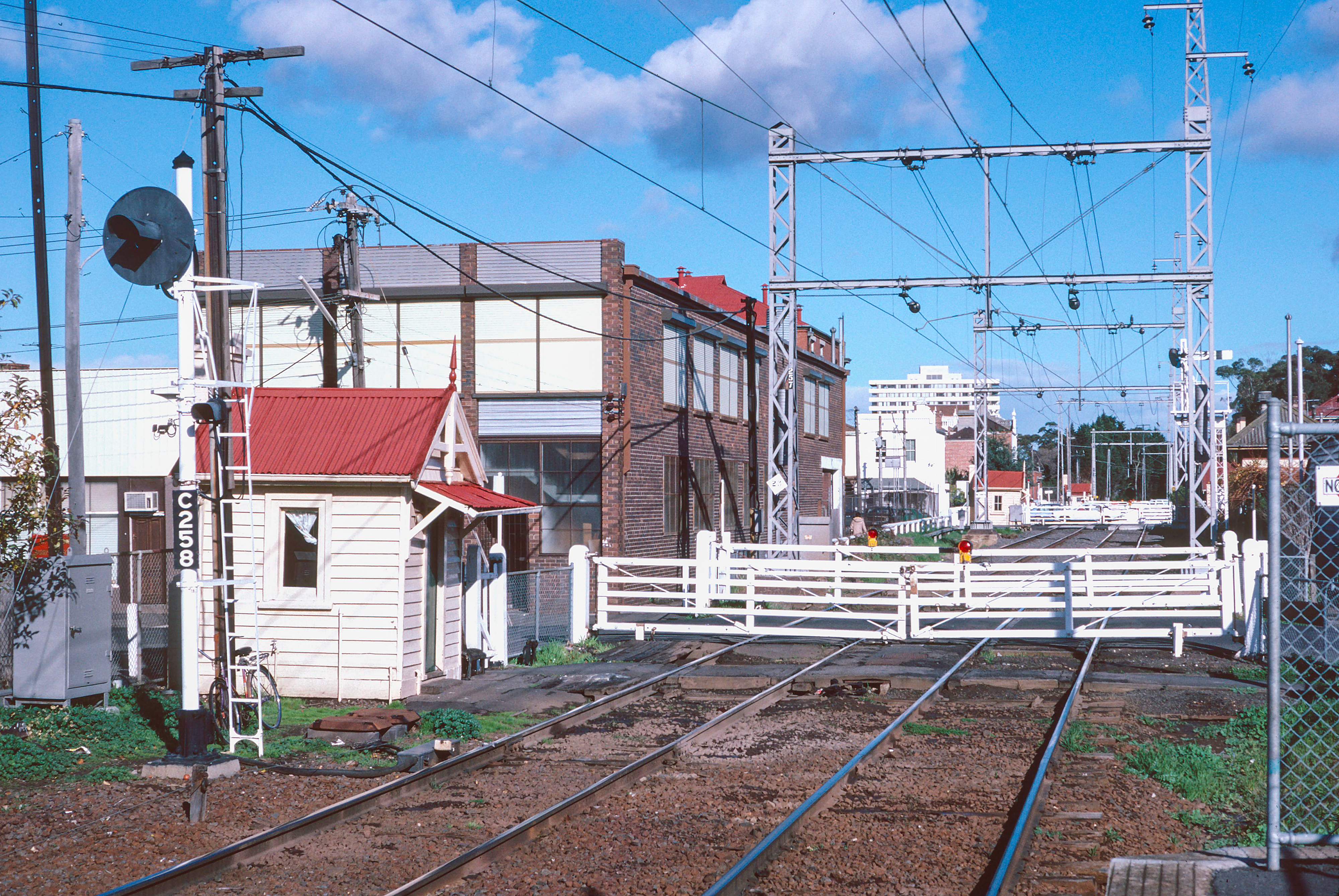
ABOVE: The view looking from the down platform at Jewell looking in the up direction June 22 1985. Photo courtesy Des Jowett.
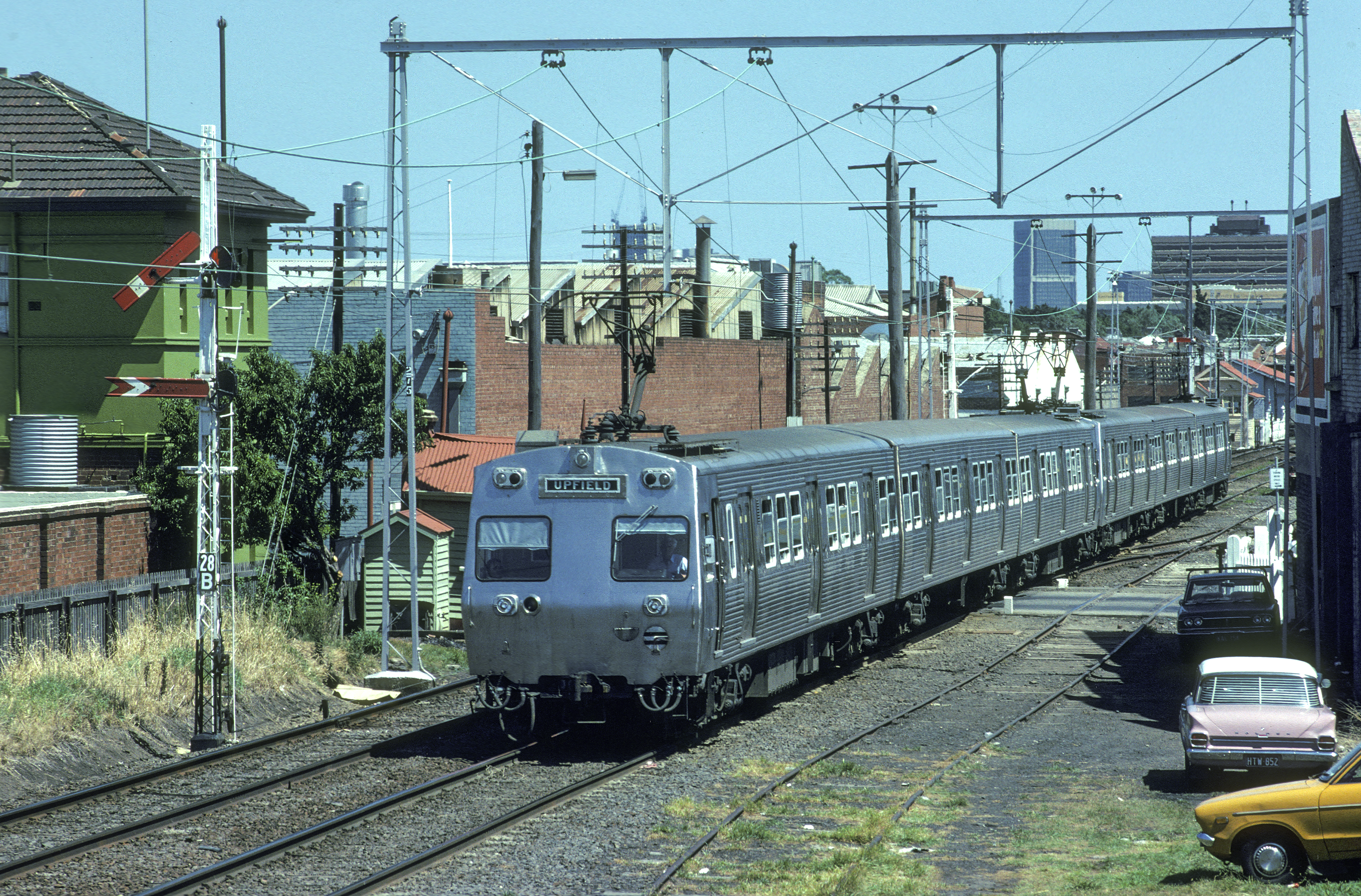
ABOVE: A down Upfield silver train crosses the Dawson street crossing, Jewell's signalbox can be seen at the rear of the train, the train is about to arrive at Brunswick. Jan 1981.
Brunswick

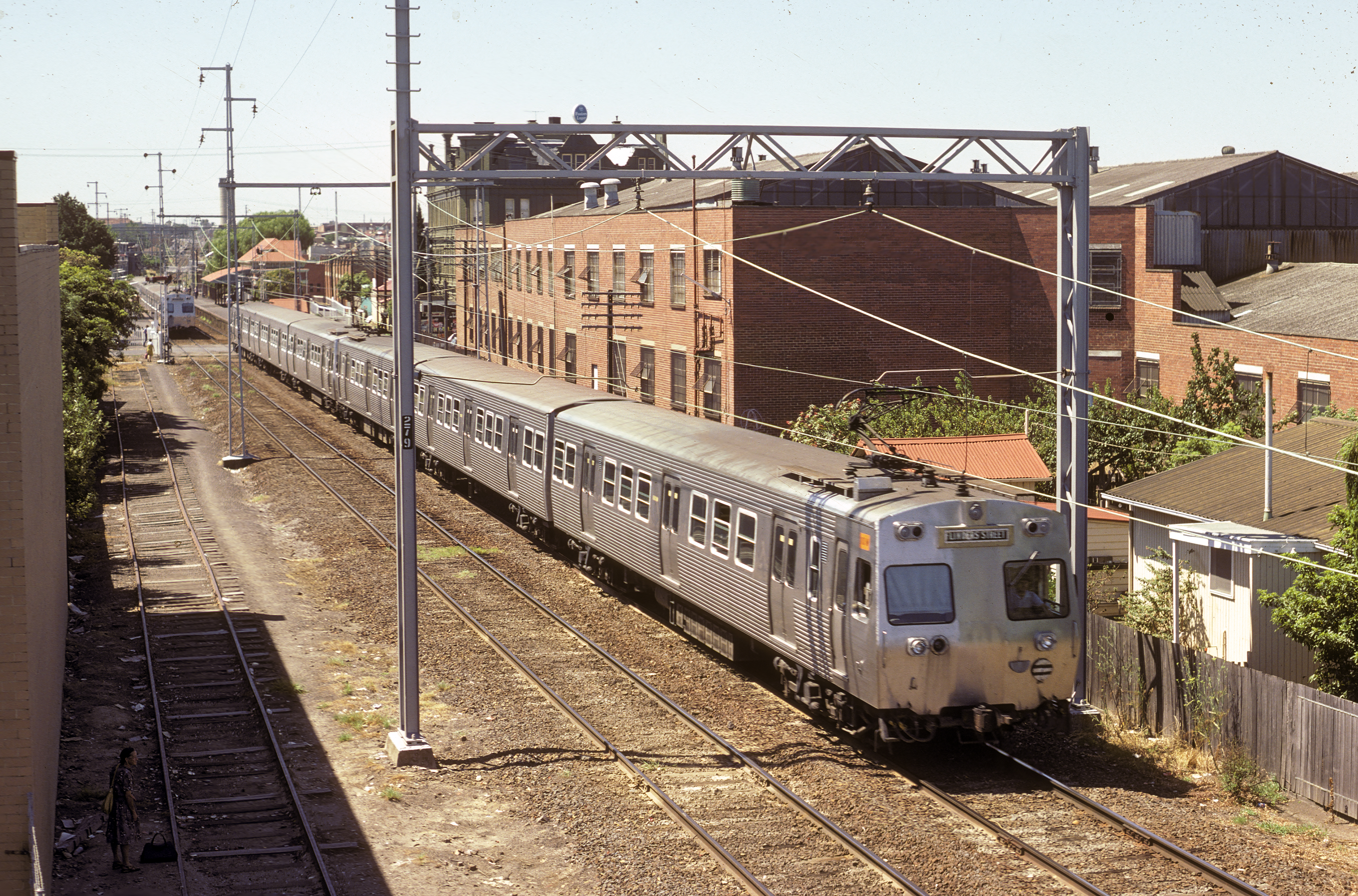
ABOVE: An up silver departs Brunswick Jan 20 1981.
Anstey

ABOVE: An up 3 car silver pauses at Anstey. Dec 6 1980. Photo courtesy Des Jowett
MORELAND
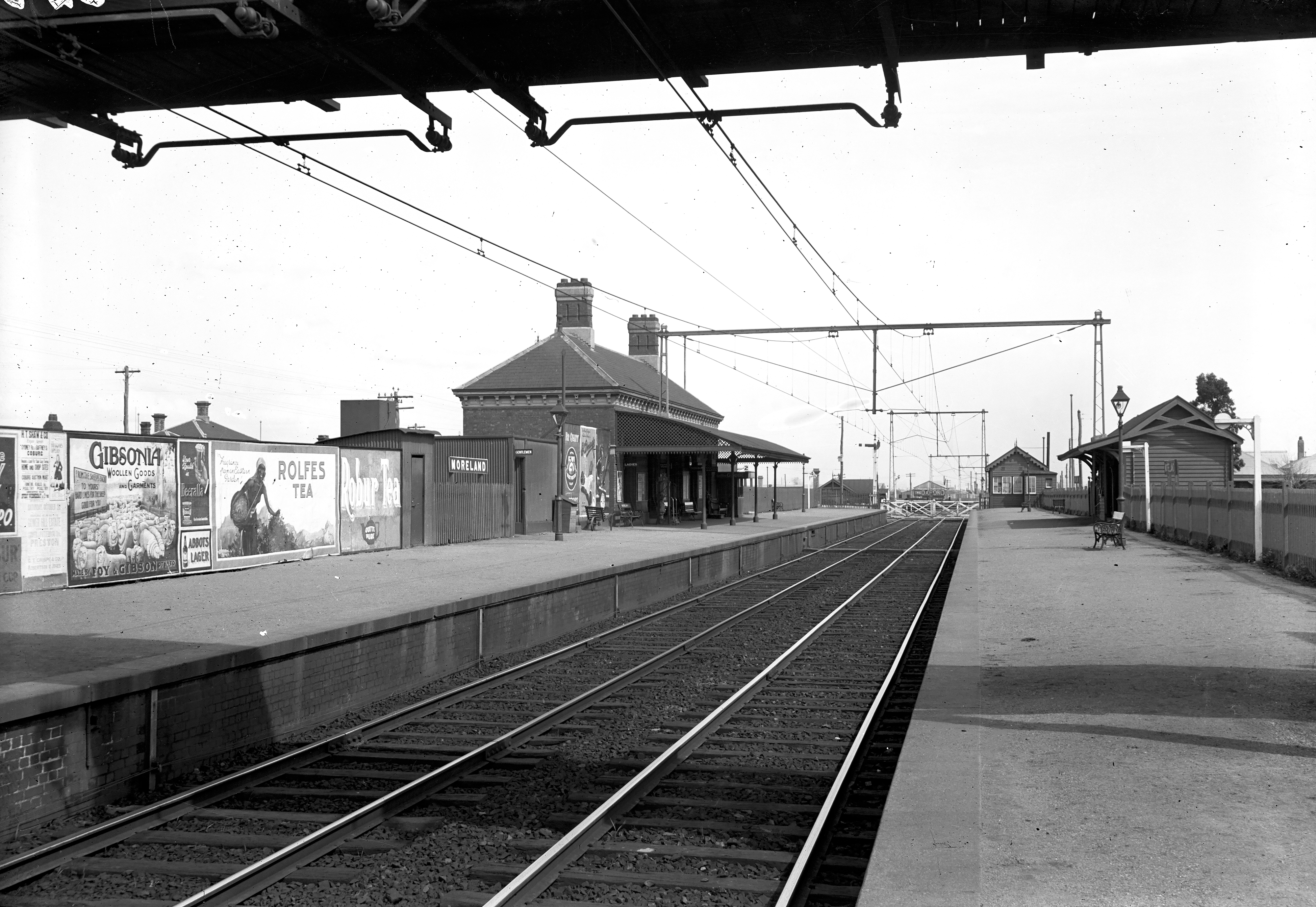
ABOVE: Moreland, looking towards Melbourne, circa 1930
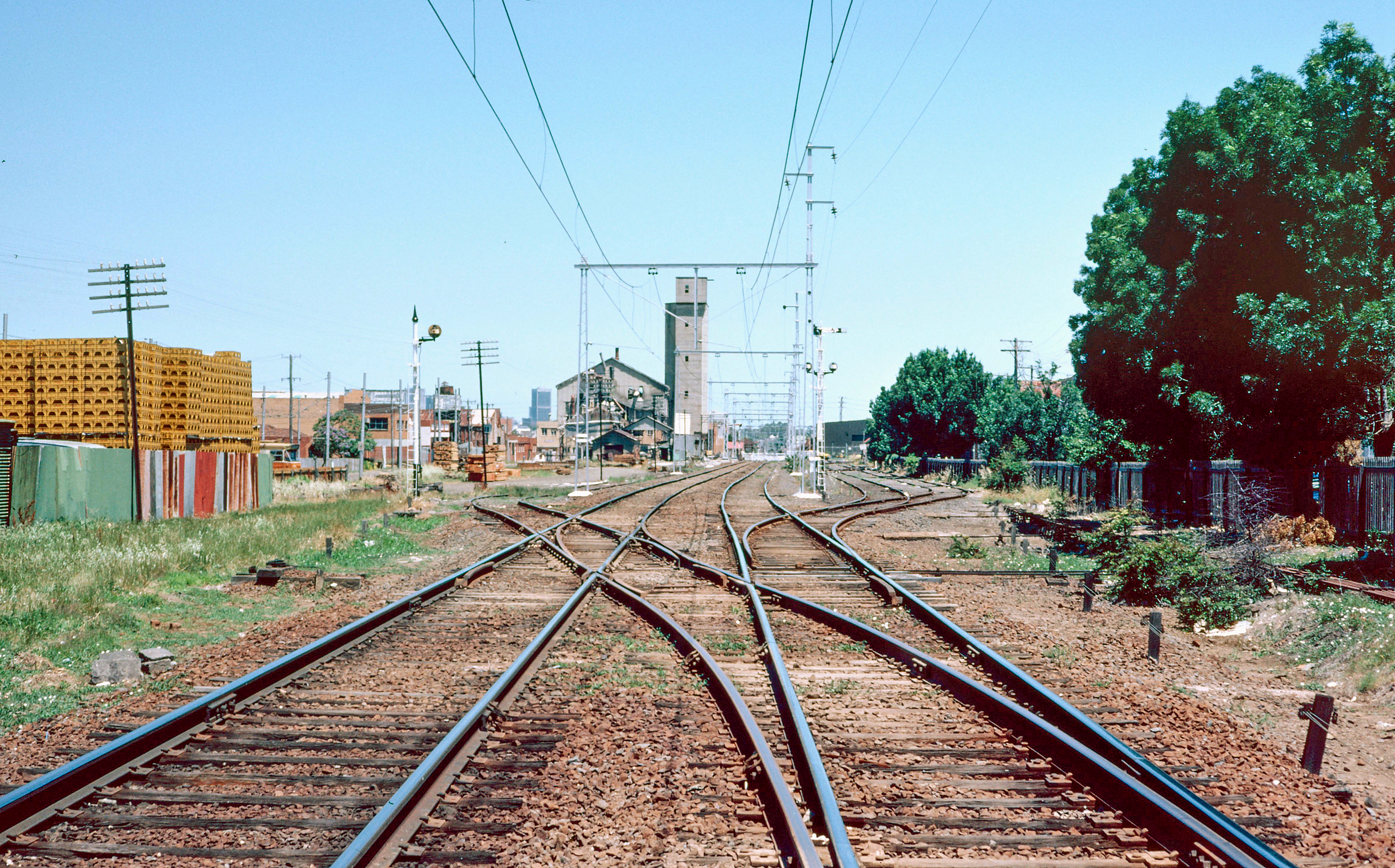
ABOVE: Looking south from Moreland Rd level crossing showing the sidings on both sides of the line. Dec 6 1980. Photo courtesy Des Jowett.
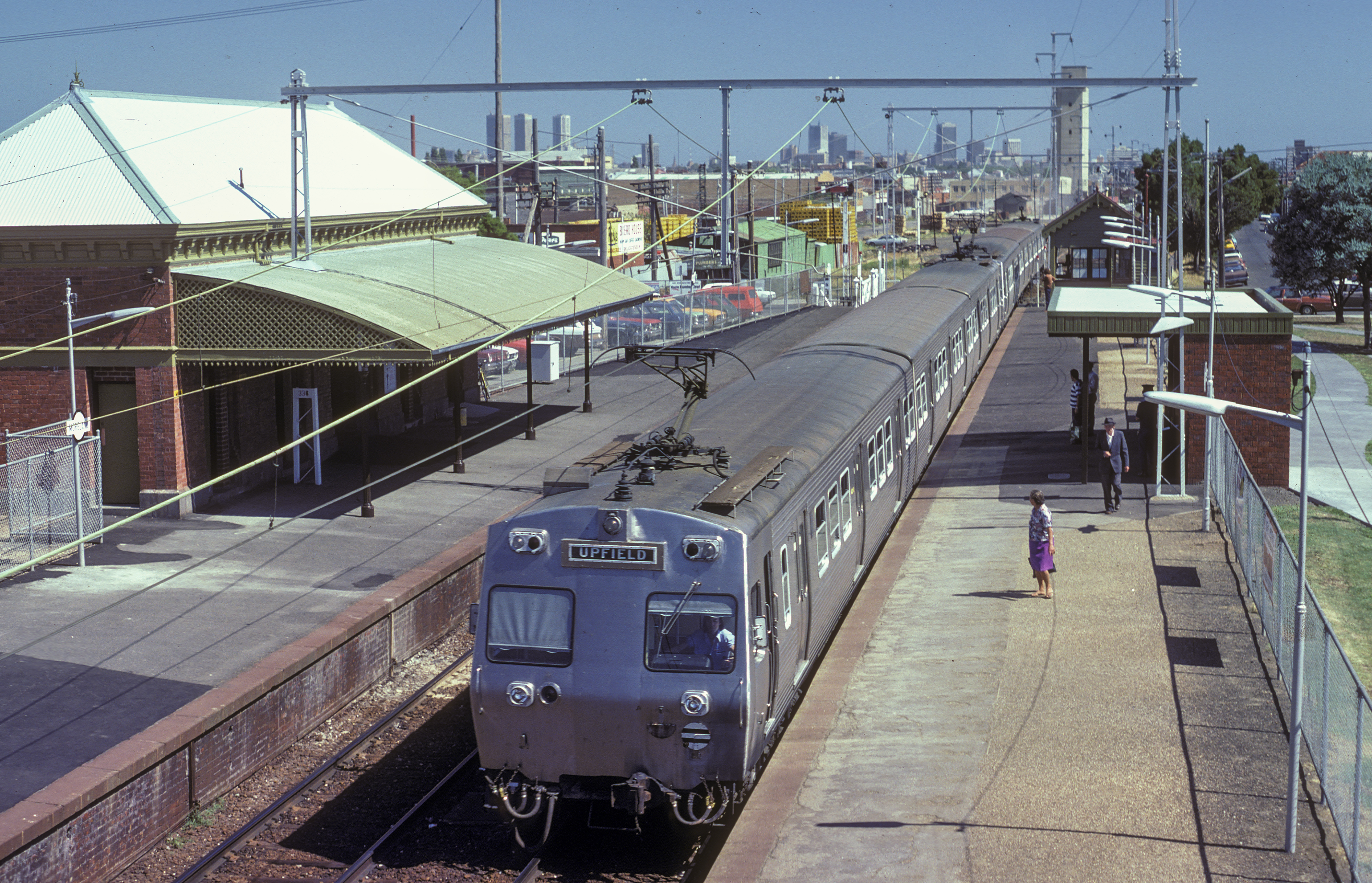
ABOVE: A down Silver train arrives Moreland Jan 20 1981.
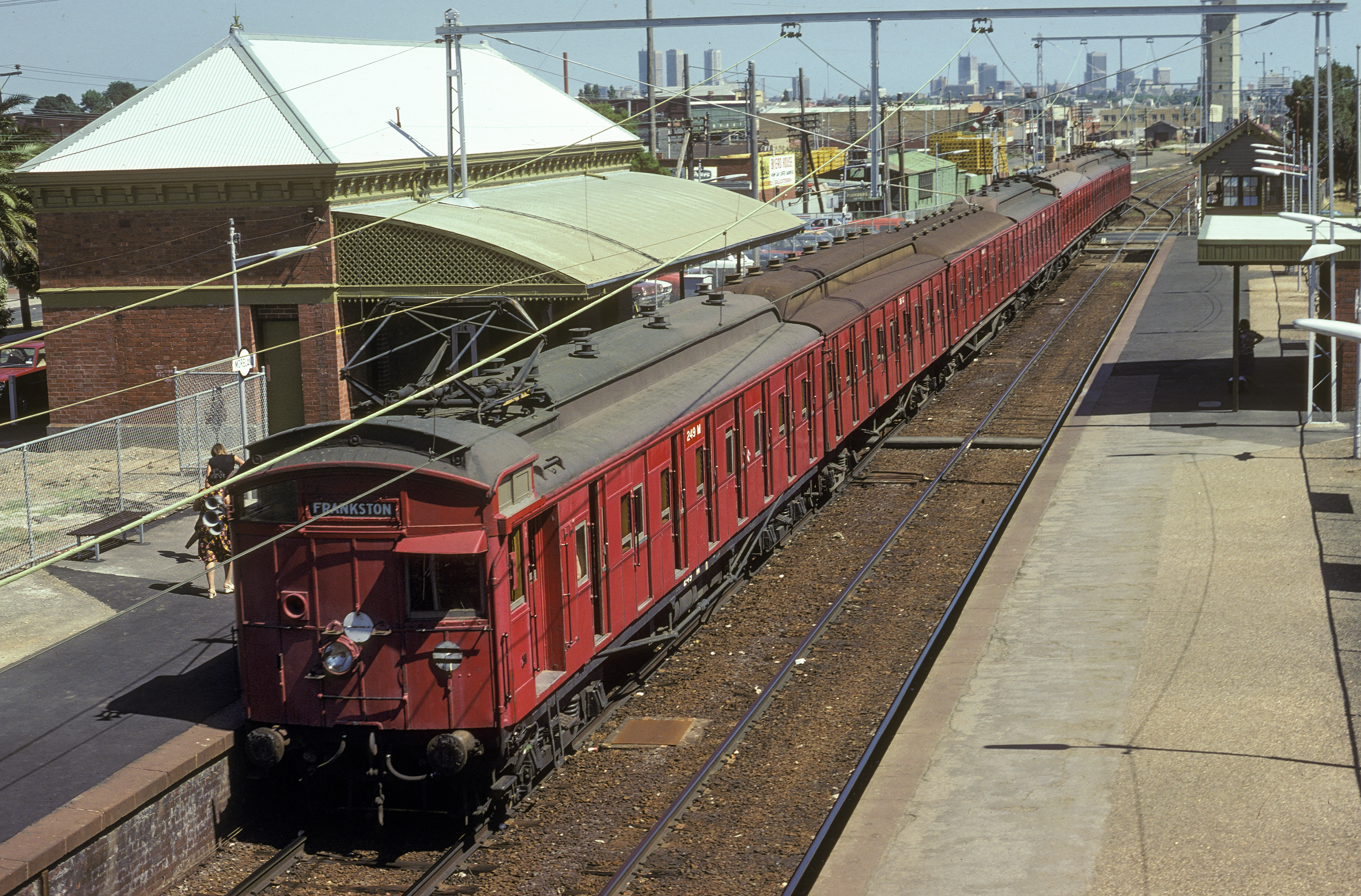
ABOVE: An Upfield to Flinders St. "Tait" departs Moreland Jan. 20 1981
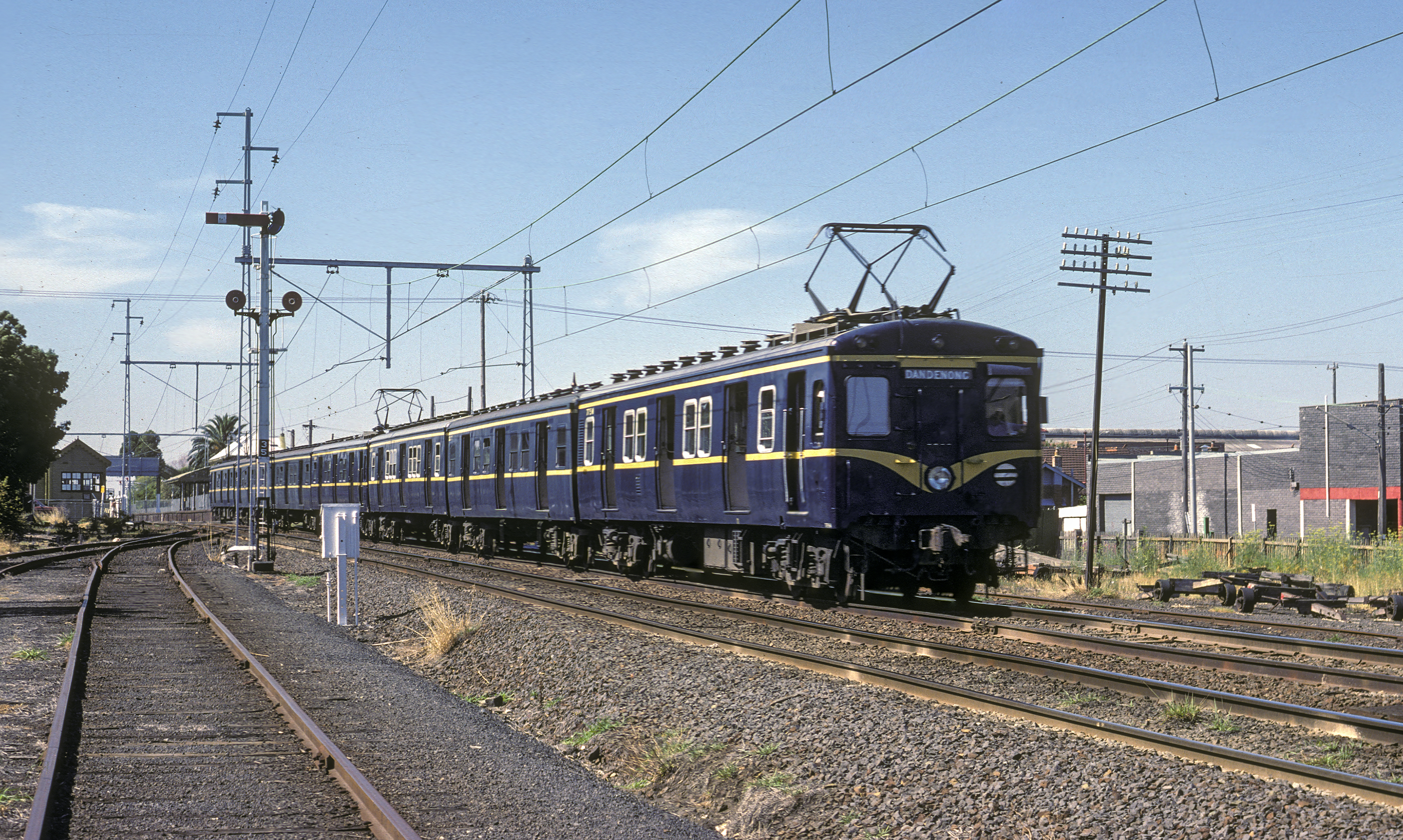
ABOVE: An Upfield to Flinders St. "Harris" suburban departs Moreland. Jan. 20 1981
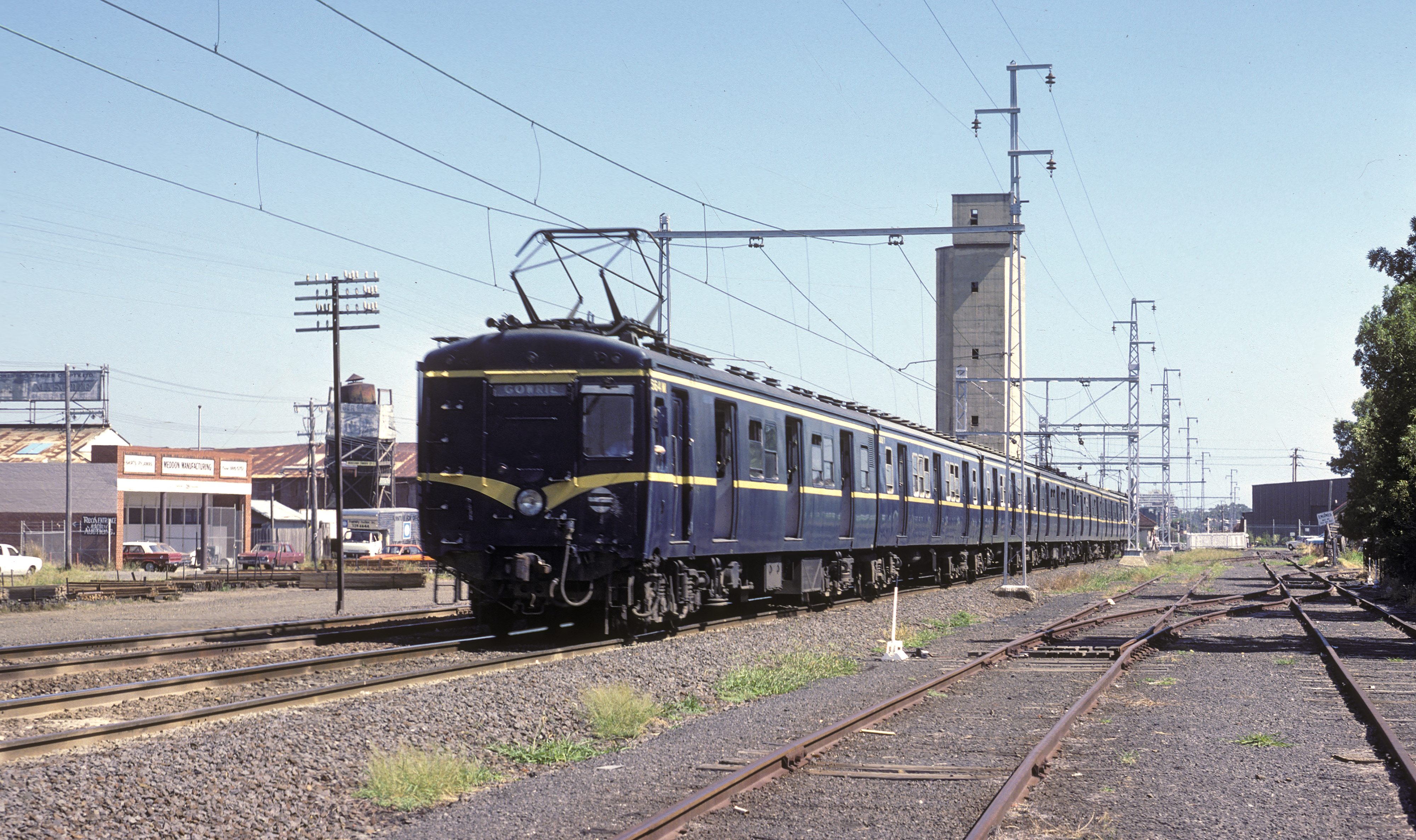
ABOVE: A down Gowrie bound Harris passes the sidings on the down side of the line approaching Moreland. Jan 20 1981

ABOVE: T 370 shunts the down side sidings at Moreland on a Coburg goods. May 2 1975 (photo courtesy Chris Wurr)

ABOVE: The Brunswick plaster mills were situated on the up side of the line between Moreland and Anstey (PROV photo)
COBURG

ABOVE: Looking towards Melbourne in 1947, a D - M Tait set will have to dock up to the platform the photograher is standing on prior to running a through Glen Waverley service. The signalbox shown dates from 1928, it was demolished in 2020 to make way for a skyrail project. (photo courtesy Phil Dunn collection)

ABOVE: A down Silver pauses at Coburg Jan. 1981

ABOVE: A railfan special 2 car Tait pauses at Coburg for photos whilst a "Silver" is seen stabled in the yard. Coburg was somewhat of an oddity as it had only a single platform to service both up and down trains
Nov. 29 1980
Photo courtesy Warren Banfield

ABOVE: Batman looking north, June 1982.

ABOVE: A down silver train approaches Batman, Nov 1982. (photo courtesy Noel Bamford)
FAWKNER
The AEC's were sufficient for traffic needs and there is at least one occasion when a Double ended Leyland Railmotor ran the service on 17th 11 1943 when 54RM developed a fuel tank problem (VR Secs Corres. 43/14927). About 300 yards from the dead end at Somerton there was a Stop Board for Petrol Electric trains but to date there is no record of any incident involving one at Somerton.
Here are two more shots, one I took of the PERM Stop Board approaching Somerton and a newspaper shot around c1928 showing Campbellfield prior to reopening and the goods siding.

ABOVE: Until 1959 the electrification ended at Fawkner and an AEC railmotor provided a connecting service to Somerton. (photo courtesy Noel Reed)
BELOW: This photo at Fawkner was taken between the 12th and 17th December 1955 when the turntable
at Fawkner needed repairing and the AEC could not be turned. You can see it jacked up in the photo.
I travelled several times with Driver Mick Flannery on 10RM between Fawkner and Somerton.
Maybe 10RM stayed for the week.
thanks to Des Jowett for the caption information.
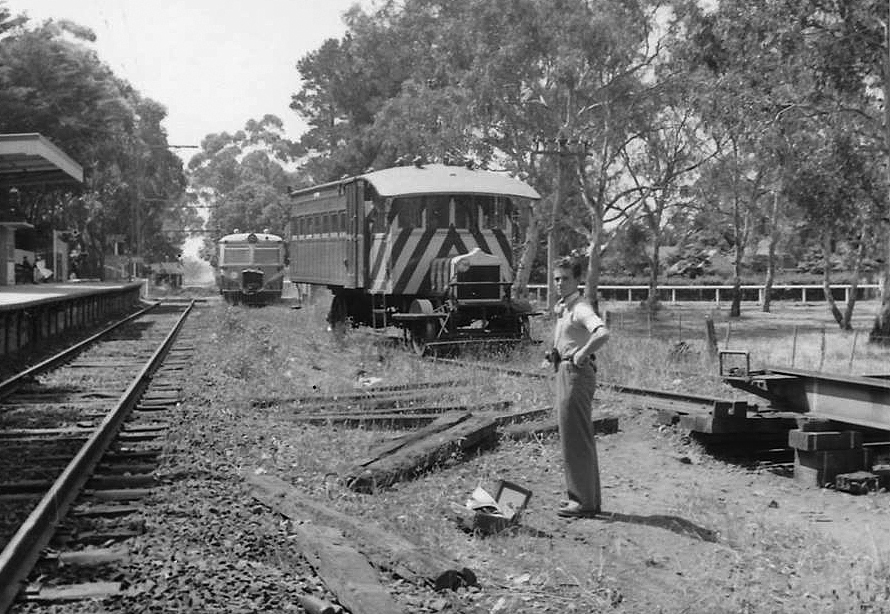
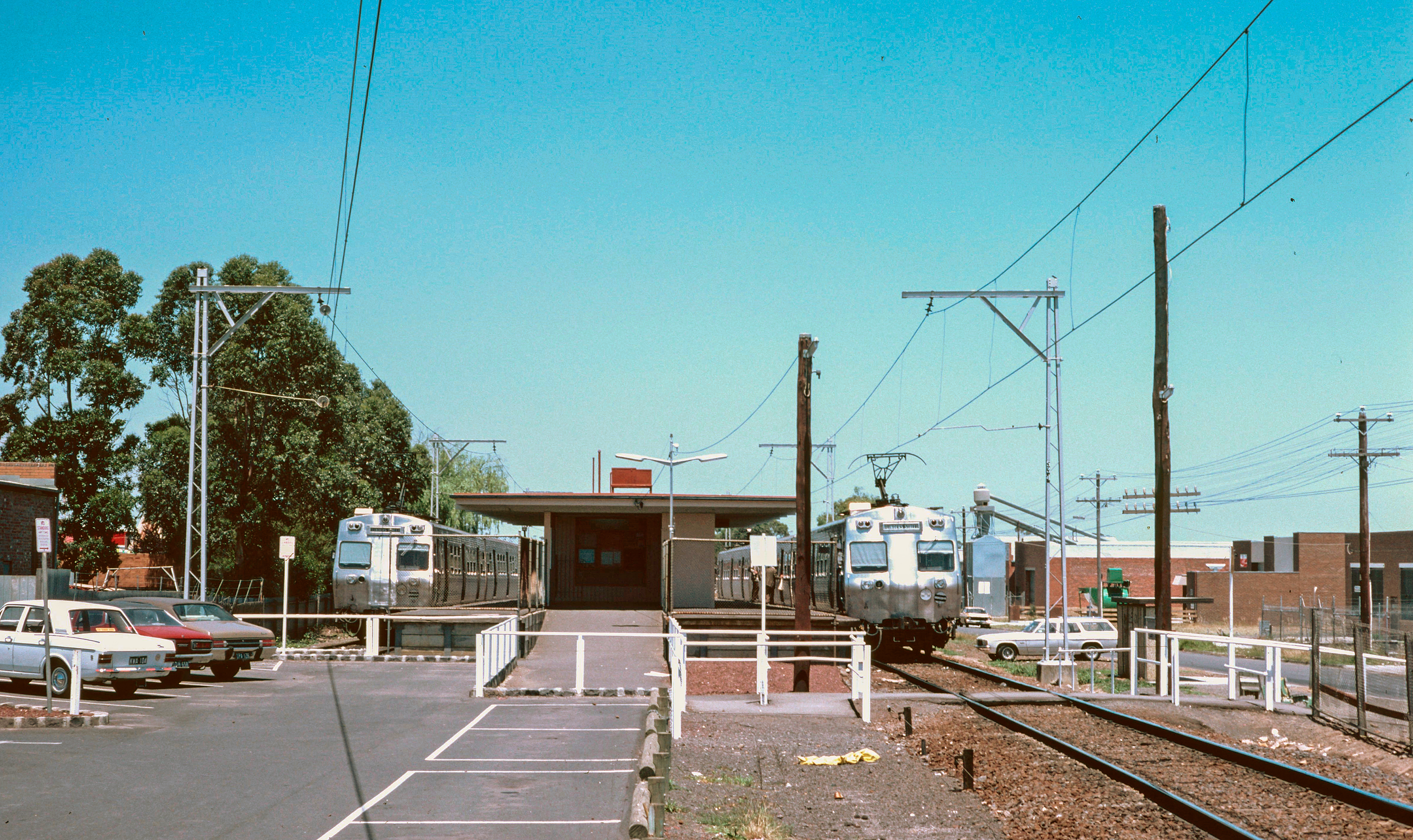
ABOVE: Gowrie looking in the up direction towards Melbourne. The silver on the left has terminated in the dead end back platform, the silver on the right is an up Upfield service. Dec 6 1980. Photo courtesy Des Jowett.
CAMPBELLFIELD

ABOVE: An AEC railmotor at the rather spartan Campbellfield station.
BELOW: The Walker ran from December 12th to 17th 1955 while the turntables were being serviced.
Photo coutesy Des Jowett.

